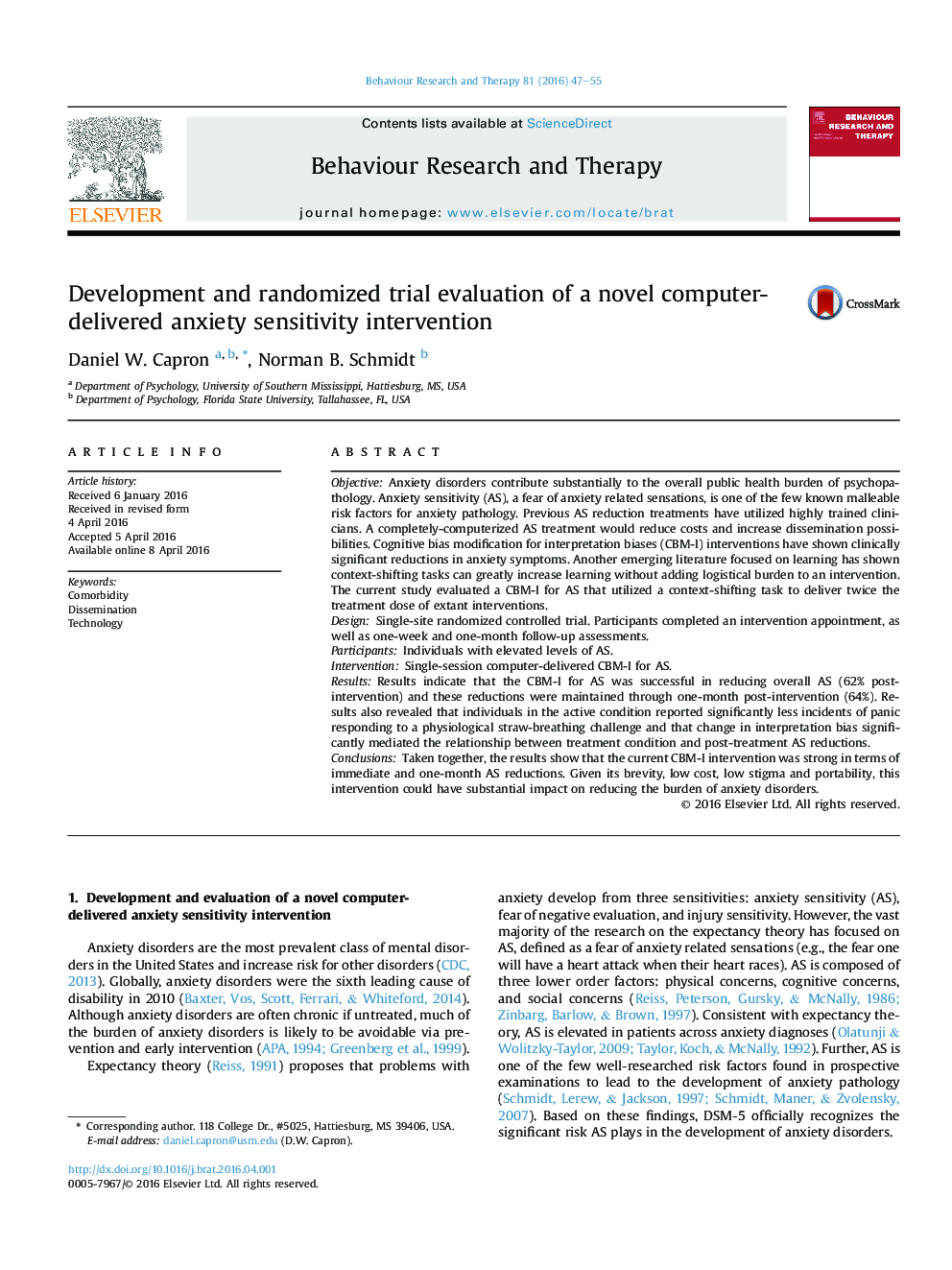| Article ID | Journal | Published Year | Pages | File Type |
|---|---|---|---|---|
| 901750 | Behaviour Research and Therapy | 2016 | 9 Pages |
•15–20 min intervention reduced anxiety sensitivity by 62%.•Reductions were maintained (64%) through a one-month follow-up.•Active condition had significantly less panic responding to biological challenge.•Changes in interpretation bias significantly mediated treatment effect.
ObjectiveAnxiety disorders contribute substantially to the overall public health burden of psychopathology. Anxiety sensitivity (AS), a fear of anxiety related sensations, is one of the few known malleable risk factors for anxiety pathology. Previous AS reduction treatments have utilized highly trained clinicians. A completely-computerized AS treatment would reduce costs and increase dissemination possibilities. Cognitive bias modification for interpretation biases (CBM-I) interventions have shown clinically significant reductions in anxiety symptoms. Another emerging literature focused on learning has shown context-shifting tasks can greatly increase learning without adding logistical burden to an intervention. The current study evaluated a CBM-I for AS that utilized a context-shifting task to deliver twice the treatment dose of extant interventions.DesignSingle-site randomized controlled trial. Participants completed an intervention appointment, as well as one-week and one-month follow-up assessments.ParticipantsIndividuals with elevated levels of AS.InterventionSingle-session computer-delivered CBM-I for AS.ResultsResults indicate that the CBM-I for AS was successful in reducing overall AS (62% post-intervention) and these reductions were maintained through one-month post-intervention (64%). Results also revealed that individuals in the active condition reported significantly less incidents of panic responding to a physiological straw-breathing challenge and that change in interpretation bias significantly mediated the relationship between treatment condition and post-treatment AS reductions.ConclusionsTaken together, the results show that the current CBM-I intervention was strong in terms of immediate and one-month AS reductions. Given its brevity, low cost, low stigma and portability, this intervention could have substantial impact on reducing the burden of anxiety disorders.
